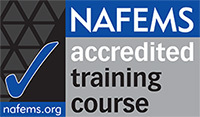Practical Modelling of Joints and Connections
Most structures involve some form of jointing or connection. Traditional fabricated structures have used many thousands of bolts and rivets to connect components together in a continuous manner, in the case of ships and aircraft the total can run into millions.
Even today many structures rely on this type of technology – for example, the use of spot welds in a modern road vehicle. Significant discrete load paths are formed by lugs and pins, clips or similar connectors in many structures across a wide range of industries. Alternative forms of connection are welds joints and bonded joints. These may well exist as the sole means of load transfer or be supplemented by mechanical connections such as bolts or rivets.
The engineer is faced with an often difficult decision when attempting to simulate such connections and joints within a Finite Element Analysis (FEA). In many cases, the details of each individual connection can be ignored if an overall stiffness or strength assessment is to be made and the connection is assumed reasonably continuous. However, there may be doubts about the local flexibility and load paths developed with this assumption. It may be that the assessment of the local behavior of the connector is essential to the safety case. This would certainly be the case with main attachment fittings for example. In some cases, the interaction between the connectors and the surrounding structure is critical, as in the case of pre-loaded bolts and inter-rivet buckling.
Modeling of weld features to get a reasonable estimate of stress concentrations at the weld toe can be problematic; do we model with a fine detailed 3D model, or use a ‘hot spot’ type of approach?
The objective of this course is to review the various connection and joint technologies in use, give an overview of the physics involved and show how to successfully implement practical solutions using Finite Element Analysis.
Course Process and Details
The course is completely code independent. No software is required.
Each topic in the class is treated as a building block and is presented using an overview of the physics and theory involved. The math is kept simple and the emphasis is on practical examples from real life to illustrate the topic. The mapping to Finite Element analysis techniques is shown with numerous workshops. The tutor will be showing analysis results interactively and involving the students in the process via Q and A periods during each session, follow up emails and a Course Bulletin Board
- Students are welcome to send in problems from industry and these will be discussed as time permits.
- Full notes are provided for the students, together with personal passwords for e-learning backup material, bulletin board access etc.
Students will join the audio portion of the meetings by utilizing the VoIP (i.e. headset connected to the computer via headphone and microphone jacks) or by calling into a standard toll line. If you are interested in additional pricing to call-in using a toll-free line, please send an email to: e-learning @ nafems.org
Course Contents
Bolts and Rivets
Overview
- Review of practical designs and applications
- Additional bolting calculations
Finite Element Modeling Methods
- Bolt and Rivet Groups
- Rigid and flexible spider elements used in bolt and rivet loading distribution
- Single bolts/rivets
- Overall Stiffness and load path assumptions
- Influence of clamped structure
- Influence of bolt pre-load
- Different approaches between rivets and bolts
- Line element representation with spider
- Shell element representation with spider
- Solid element representation with spider (nugget or bolt section)
- Inter-rivet buckling and other instabilities
- Pre-loading methods
- Internal forces directly applied
- ‘freezing’ of elements to induce pre-strain
- Usage with linear and nonlinear contact surfaces
- Overview of application and methodology
- Types of Linear Contact
- Nonlinear Contact Issues
- Interference Fit
- Detailed modeling of bolts and rivets in linear and nonlinear analysis
- Full 3D simulation
- Axisymmetric Idealization
- Nonlinear Effects
- Frictional effects
- Fatigue and Fracture Mechanics of bolts and rivets
Lugs
Overview
- Review of practical designs and applications
- Traditional lug failure modes and calculations
- Bearing Distribution assumptions
FE Modeling Methods
- 2D Shell modeling
- 3D Solid modeling
- Constraint or Loading based methods
- Linear and Nonlinear Contact methods
- Interference fits
- Fatigue and Fracture Mechanics
Welds
Overview
- Review of practical designs and applications
- Traditional welding classifications and calculations
FE Modeling Methods
- Weld simulation with 2D shell models
- Weld simulation with 3D solid models
- Weld Toe stress concentrations
- Hot Spot methods
Bonded Joints
Overview
- Review of practical designs and applications
FE Modeling Methods
- 2D thin shell models
- 2D plane strain methods
- 3D solid models
- Cohesive Zone Failure Modeling
- VCCT Failure Modeling






